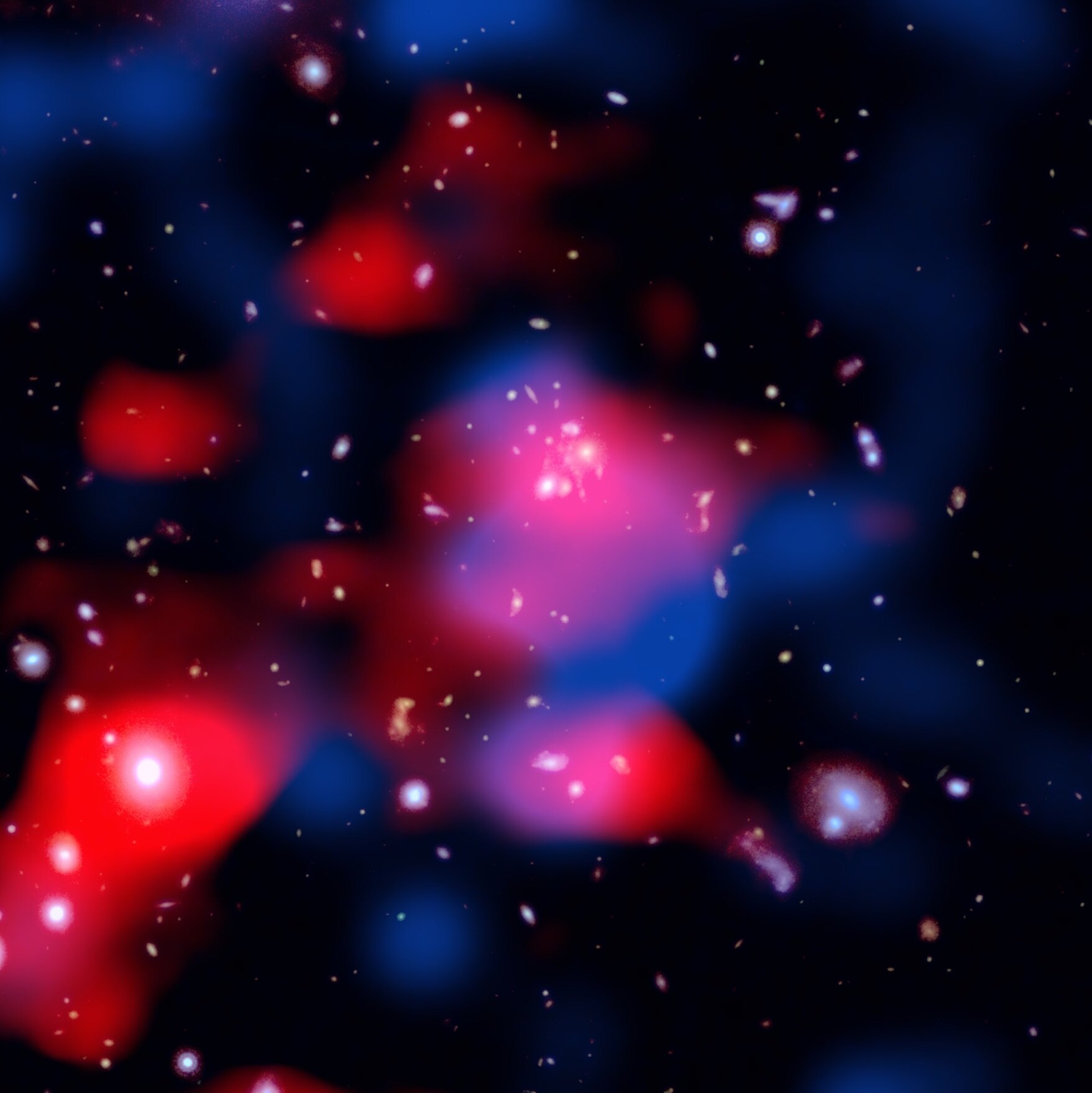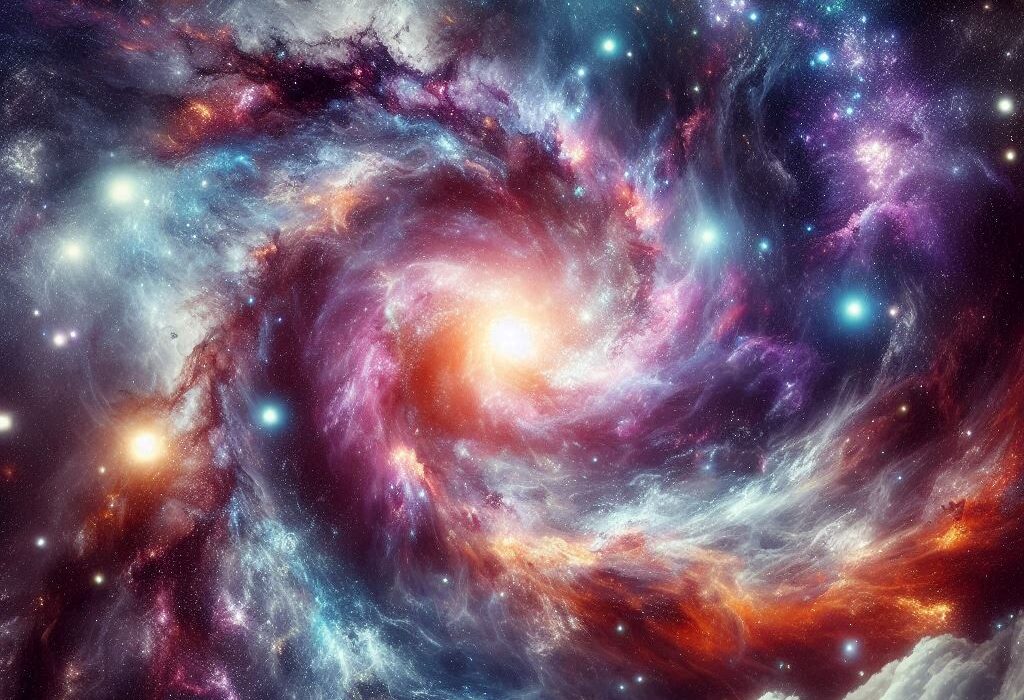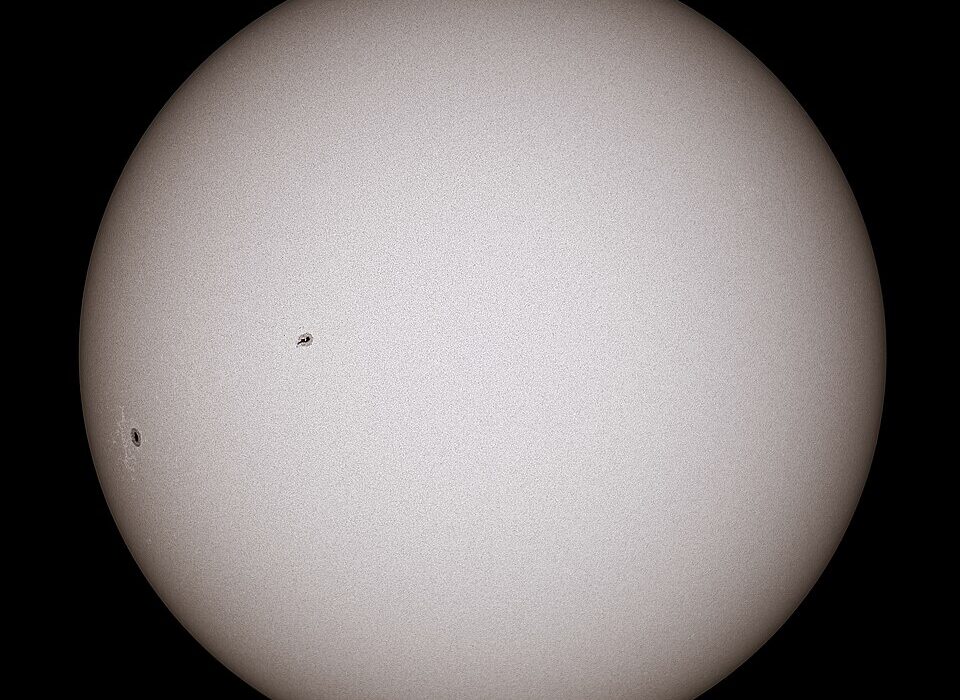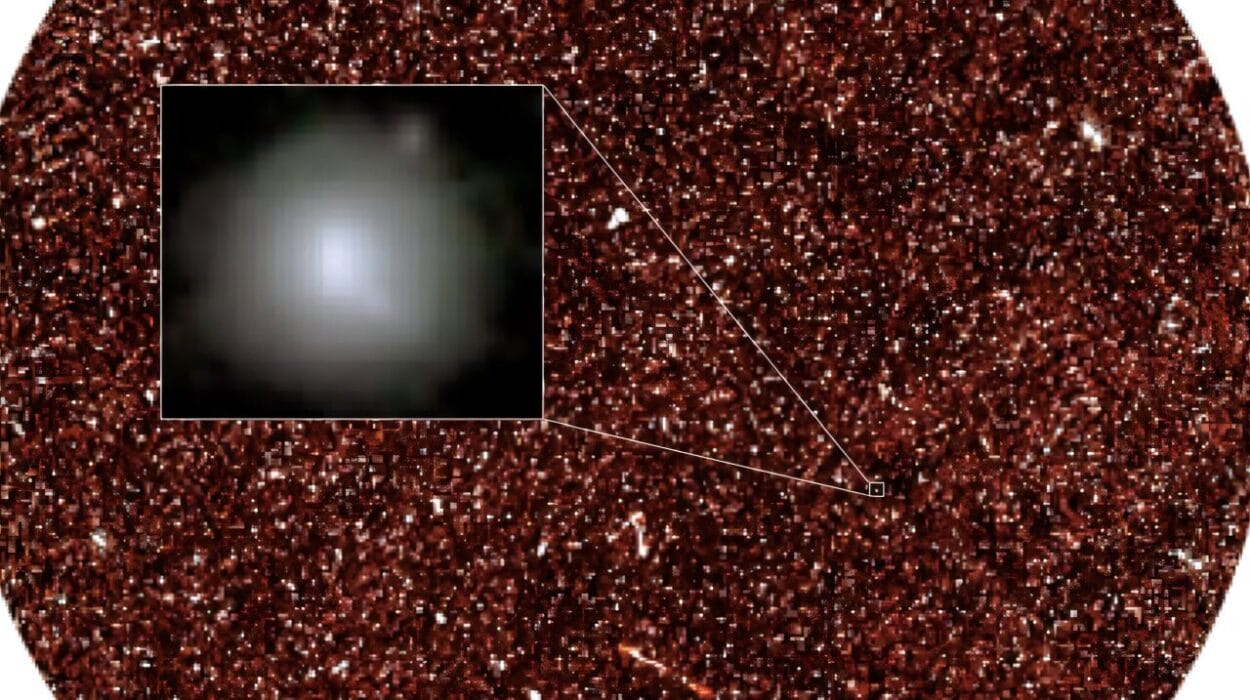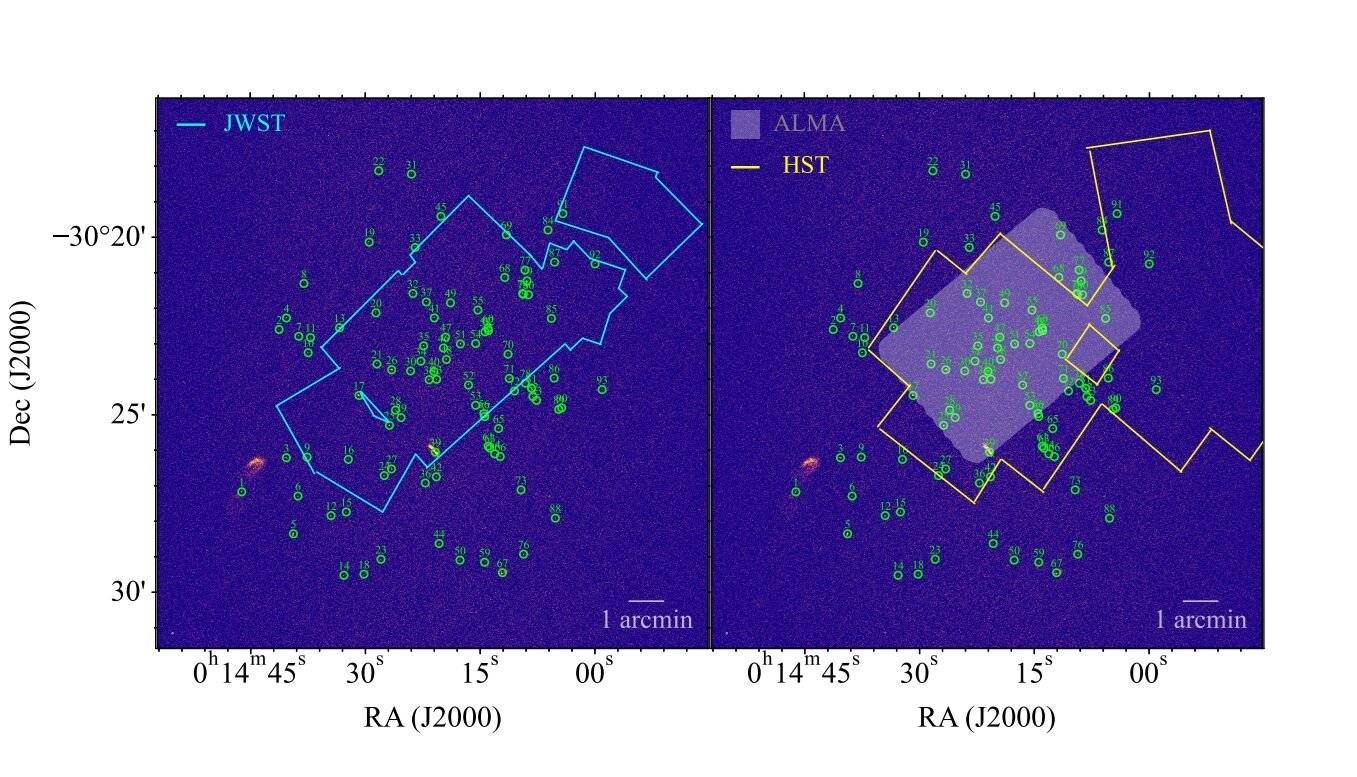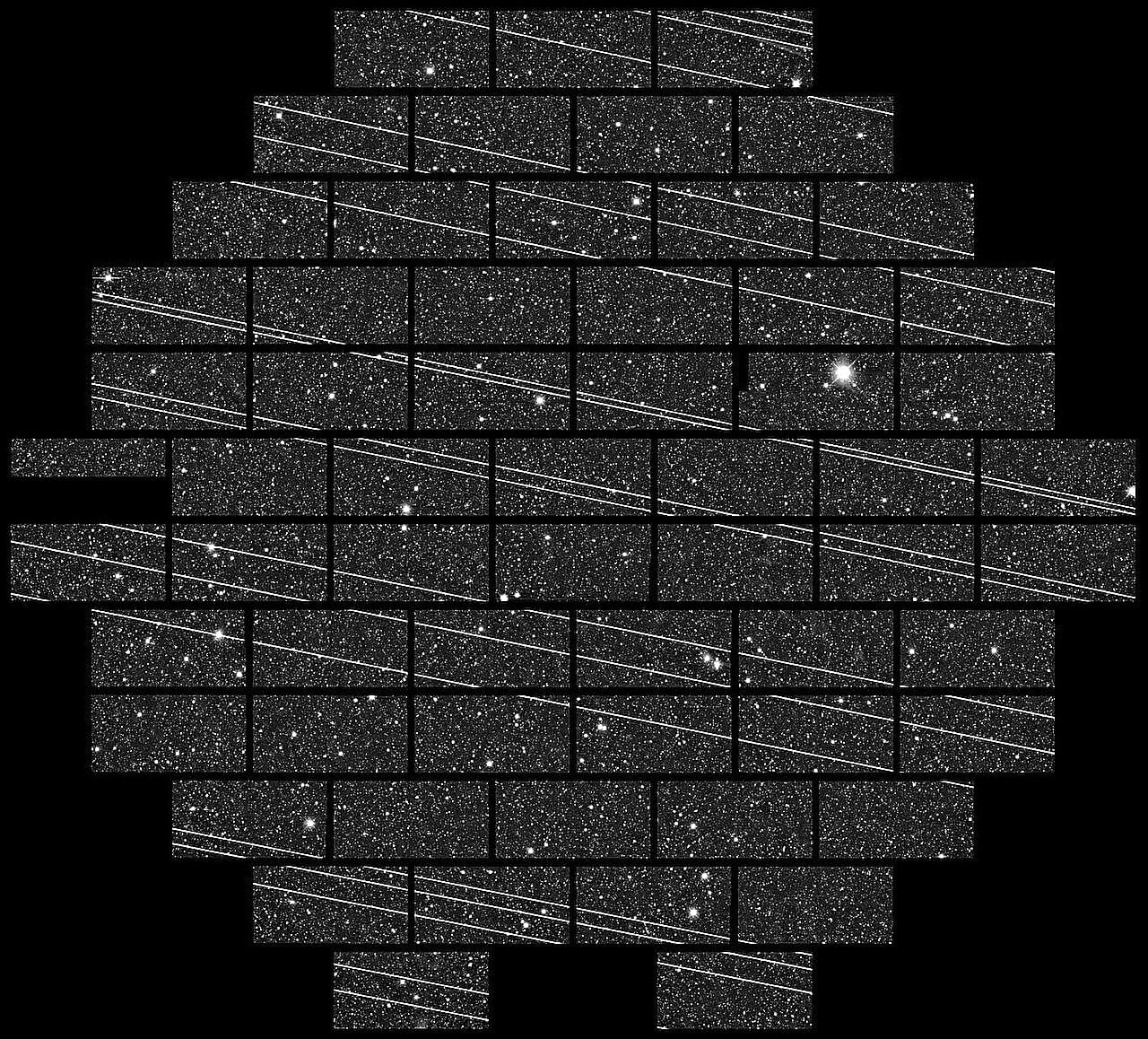In the silent expanse of the early universe, long before Earth even existed, something extraordinary was happening. Galaxies were gathering into clusters, colliding, merging, and giving birth to colossal cosmic structures. But hidden deep within this early chaos was a secret—an ocean of energetic particles bathing entire galaxy clusters in invisible fire.
Now, 10 billion years later, that ancient cosmic whisper has finally reached us.
Astronomers have detected a “mini-halo”—a massive, ghostly cloud of high-energy particles—surrounding one of the most distant galaxy clusters ever seen. The discovery, published in The Astrophysical Journal Letters, pushes the boundaries of what we know about the early universe, suggesting that even in its youth, the cosmos was already ablaze with energetic processes.
This mini-halo isn’t just distant—it’s twice as far as any previously discovered, and its faint radio signal has traveled for ten billion years before touching the instruments of Earth-bound scientists. In doing so, it has unlocked a hidden chapter of the universe’s story.
A Glow Among the Galaxies
The find comes from a galaxy cluster named SpARCS1049, studied by an international team of researchers led by Julie Hlavacek-Larrondo of Université de Montréal and Roland Timmerman of Durham University’s Institute for Computational Cosmology.
Using the LOFAR (Low Frequency Array) radio telescope—a sprawling network of over 100,000 antennas across eight European countries—the team detected something remarkable: a subtle but widespread radio glow. This was not coming from any single galaxy. Instead, it emerged from the seemingly empty space between galaxies within the cluster.
Stretching more than a million light-years across, the glow revealed the unmistakable signature of a mini-halo—charged particles spinning at high speeds, emitting radio waves as they danced with magnetic fields in the vacuum of space.
“It’s as if we’ve discovered a vast cosmic ocean, where entire galaxy clusters are constantly immersed in high-energy particles,” said Hlavacek-Larrondo.
For Timmerman, the discovery was just as awe-inspiring. “It’s astonishing to find such a strong radio signal at this distance. It means these energetic particles and the processes creating them have been shaping galaxy clusters for nearly the entire history of the universe.”
The Mystery of the Mini-Halo
So, what exactly is a mini-halo?
It’s not a structure you can see with the naked eye, or even with an ordinary telescope. Mini-halos are diffuse, ghost-like regions that stretch across space, made of high-energy particles moving through magnetic fields and plasma in the spaces between galaxies in a cluster. These particles release low-frequency radio waves, which can be picked up on Earth—if you’re patient enough to listen carefully.
Until now, mini-halos had only been found in the relatively nearby universe. That’s not surprising—they’re incredibly faint, and most radio telescopes struggle to detect them at large distances. But LOFAR’s sensitivity and design gave astronomers their best chance yet to peer deeper into the past.
The result: confirmation that these invisible halos were already forming just a few billion years after the Big Bang.
Powered by Black Holes or Particle Collisions?
The discovery raises a tantalizing question: where do these powerful particles come from?
One leading theory involves supermassive black holes—the giants that lurk at the centers of galaxies. These black holes don’t just sit quietly; they can erupt with astonishing violence, sending jets of charged particles hurtling into space. Over time, these jets could create vast clouds of high-energy particles that drift away from the black hole and permeate the cluster.
But there’s a problem: how do those particles keep their energy as they travel such vast distances? And how do they spread so evenly across a million-light-year-wide halo?
That’s where the second theory comes in—cosmic particle collisions. Inside the dense plasma of a galaxy cluster, charged particles can smash into each other at near-light speeds, producing showers of even more energetic particles. These collisions could provide a continuous source of energy, fueling the glow for billions of years.
The truth may involve both processes, or perhaps something entirely new.
A Glimpse into the Violent Youth of the Universe
What makes this discovery so thrilling is what it reveals about the early universe itself.
Just a few billion years after the Big Bang, galaxy clusters like SpARCS1049 were already teeming with activity. Black holes were erupting, plasma was boiling, and invisible magnetic fields were already sculpting the vast environments between galaxies. This wasn’t a quiet, cold cosmos—it was energetic, turbulent, and alive with motion.
“This discovery gives us a new window into how galaxy clusters grow and evolve, driven by both black holes and high-energy particle physics,” said Hlavacek-Larrondo.
It shows that the same forces shaping the universe today were already hard at work long ago, weaving together matter and energy in ways we’re only beginning to understand.
A New Era of Radio Astronomy
The mini-halo in SpARCS1049 is just the beginning. As new instruments come online—like the upcoming Square Kilometer Array (SKA), which will be the largest radio telescope ever built—astronomers hope to uncover even fainter, more distant signals. These next-generation observatories will allow scientists to map the invisible universe with unprecedented detail.
By detecting the subtle glow of cosmic rays and magnetic fields from across space and time, researchers hope to answer fundamental questions: How did the first galaxy clusters form? What roles did black holes and cosmic rays play? And how do these colossal structures evolve over billions of years?
“We are just scratching the surface of how energetic the early universe really was,” said Hlavacek-Larrondo.
Listening to the Echoes of Creation
In the stillness of space, the mini-halo’s glow is almost nothing—just a faint hum of radio waves barely distinguishable from noise. But within that whisper lies a story of unimaginable scale: a story of black holes flaring, particles colliding, galaxies assembling, and the universe itself learning to shine.
Ten billion years ago, those waves began their journey. Today, they have reached us, telling us something we’ve never heard before.
The early universe wasn’t a void. It was a symphony of energy—vast, mysterious, and still unfolding.
And now, we’re finally learning how to listen.
Reference: A Radio Mini-Halo in a Massive Cool Core Cluster of Galaxies at z = 1.709, The Astrophysical Journal Letters (2025). On Arxiv:
doi.org/10.48550/arXiv.2506.19901
